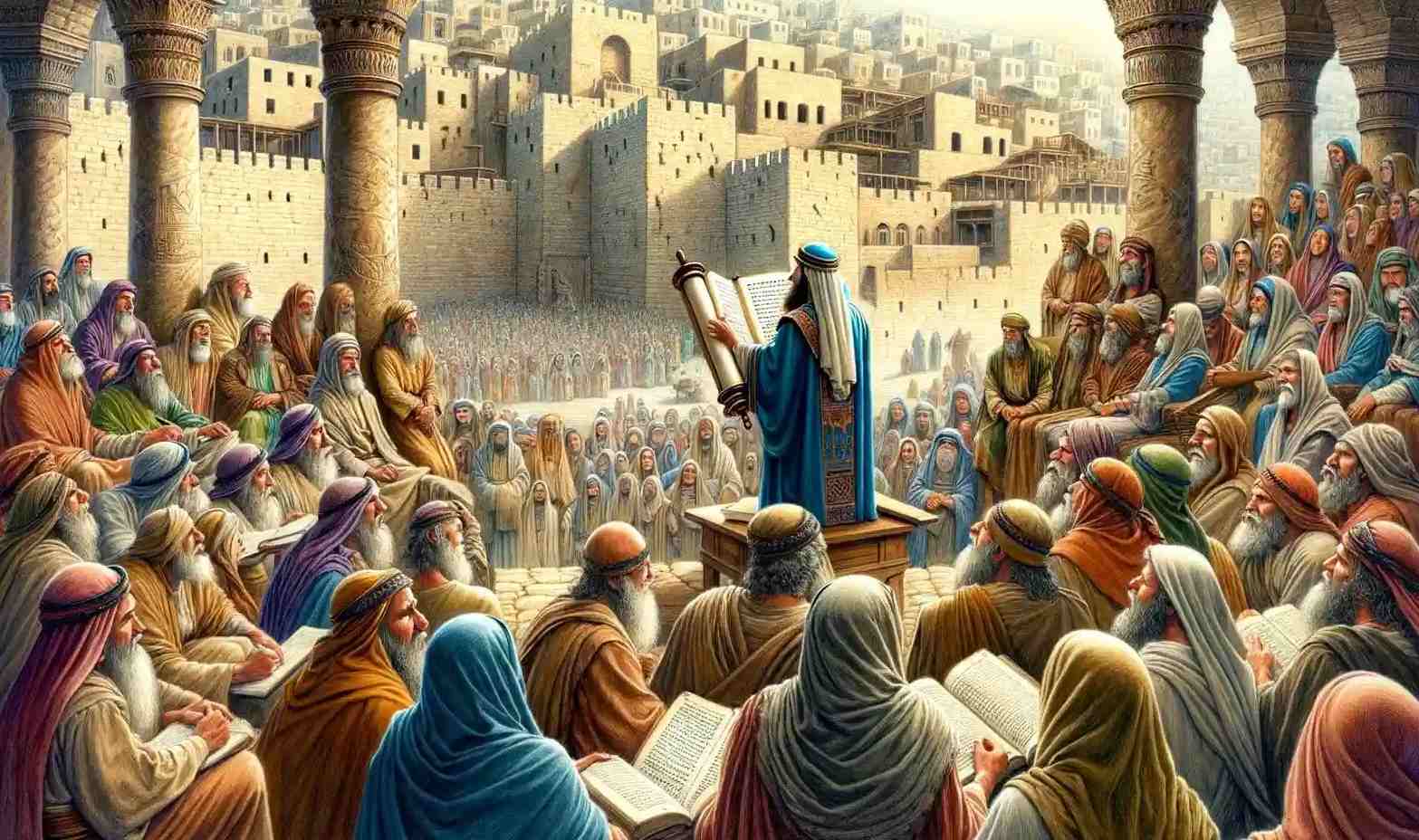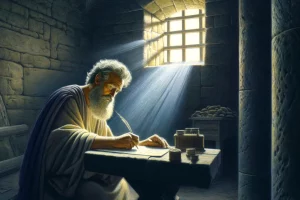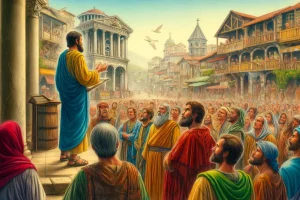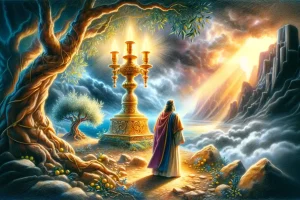
The Book of Ezra
The Book of Ezra is a significant text in the Hebrew Bible and the Christian Old Testament, documenting the return of the Jewish exiles from Babylon and the subsequent rebuilding of the Temple in Jerusalem. Here are some quick key facts about the Book of Ezra:
- Title and Position: Named after Ezra, a priest and scribe who plays a central role in the latter chapters of the book. Ezra is part of the “Writings” (Ketuvim) in the Hebrew Bible and follows 2 Chronicles in the Christian Old Testament.
- Authorship and Date: While traditionally attributed to Ezra himself, modern scholarship often considers it to have been written by the same author(s) as Chronicles and Nehemiah, possibly around the 4th century BC.
- Structure and Content: The book can be broadly divided into two parts:
- Return and Rebuilding (Chapters 1-6): Chronicles the decree of Cyrus allowing the exiles to return, the leadership of Zerubbabel, and the reconstruction of the Temple despite opposition.
- Ezra’s Mission (Chapters 7-10): Focuses on Ezra’s journey from Babylon to Jerusalem, his efforts to reform the community, and address issues like mixed marriages and the neglect of the Torah.
- Main Themes:
- Restoration and Renewal: Ezra emphasizes the themes of spiritual renewal and the restoration of the Temple as central to re-establishing the covenant community.
- Law and Holiness: The book highlights the importance of the Torah and the need for the community to live according to its statutes as a distinct and holy people.
- Leadership and Guidance: The roles of both secular leaders like Cyrus and Zerubbabel, and religious leaders like Ezra, are depicted as crucial in guiding the restoration efforts.
- Theological Significance:
- Ezra focuses on the fulfillment of prophetic words through the restoration of the Temple and the reconstitution of the Jewish community in Jerusalem, underscoring God’s ongoing commitment to His covenant.
- It illustrates the importance of the Law in maintaining the identity and religious practices of the Jewish people after the Exile.
- Modern Relevance: The Book of Ezra speaks to themes of community identity, the importance of religious traditions, and the challenges of maintaining cultural integrity in the face of external pressures.
The Book of Ezra is an essential historical and theological text within the Hebrew Bible and the Christian Old Testament. It chronicles the return of the Jewish exiles from Babylon and the challenges they faced in rebuilding their community and religious life in Jerusalem. This book is intricately linked with the narratives of Nehemiah and the Chronicles, offering a comprehensive account of post-exilic Israel. Here’s a detailed analysis of the Book of Ezra, exploring its structure, content, major themes, and theological implications.
Structure and Content
1. The Return under Cyrus’s Decree (Chapters 1-2):
- Cyrus’s Edict: The book opens with the Persian King Cyrus issuing a decree that allows the Jews to return to Jerusalem to rebuild the Temple. This decree fulfills the prophecy of Jeremiah concerning the end of the 70-year exile.
- Initial Return: Led by Zerubbabel, a significant number of exiles return. Detailed lists of returnees, including their families and roles, emphasize the restoration of Israel’s communal and religious identity.
2. Rebuilding the Temple (Chapters 3-6):
- Foundation Laid: The returnees rebuild the altar, reinstitute religious festivals, and lay the foundation of the Temple, which provokes mixed reactions of joy and despair among the people.
- Opposition and Completion: The project faces opposition from neighboring peoples, leading to delays. However, under the prophetic leadership of Haggai and Zechariah and the later support of Darius, King of Persia, the Temple is finally completed and dedicated.
3. Ezra’s Leadership and Reforms (Chapters 7-10):
- Ezra’s Arrival: Years after the Temple’s completion, Ezra arrives in Jerusalem with a second group of exiles. As a skilled scribe and priest, he brings with him the authority of the Persian king to teach the Law of God.
- Religious Reforms: Ezra confronts the issue of intermarriages between the Jewish returnees and the local populations, which he sees as a threat to the purity of the community. His reforms focus on renewing the covenant and ensuring the holiness of the community in accordance with the Torah.
Major Themes
1. Restoration and Renewal:
- The narrative centers on the theme of restoration—not only of the Temple and the city but also of the people’s religious identity and practices.
2. Leadership and Divine Providence:
- The book underscores the role of divinely guided leadership in the persons of Zerubbabel, Haggai, Zechariah, and especially Ezra. Additionally, it illustrates how divine providence works through foreign rulers like Cyrus and Darius to fulfill God’s promises.
3. Covenant Faithfulness and Purity:
- Ezra stresses the importance of covenant faithfulness as vital to the community’s survival and prosperity. This is particularly evident in Ezra’s reforms to counter intermarriage, which he views as diluting the religious and cultural integrity of the people.
4. The Centrality of the Torah:
- The Torah’s role as the foundation of Jewish life and spirituality is a key theme. Ezra’s commitment to teaching and enforcing the Law is depicted as crucial for the re-establishment of the community according to God’s statutes.
Theological Significance
Ezra presents a theology that views the return from exile as a new exodus, framing the Jerusalem community’s restoration as a continuation of God’s salvific actions. The book highlights the importance of the Temple as God’s dwelling place and the observance of the Law as central to maintaining the community’s relationship with God.
Conclusion
The Book of Ezra offers a narrative that is both a historical record and a call to spiritual renewal. It addresses themes of community rebuilding, the importance of religious traditions, and the challenges of maintaining cultural and religious identity. For contemporary readers, Ezra’s emphasis on community integrity, leadership, and adherence to spiritual values resonates with ongoing challenges in maintaining religious and communal life.
Tag:biblical law, Book of Ezra, covenant restoration, Cyrus the Great, divine decree, Ezra, Genealogies, historical narrative, intermarriage, Jerusalem, Jewish community, Leadership, Levites, Old Testament, Persian Empire, post-exilic period, religious reform, return from exile, scribes, Second Temple, spiritual renewal, Temple rebuilding, Torah, Zerubbabel



